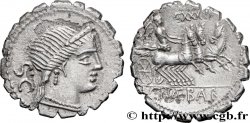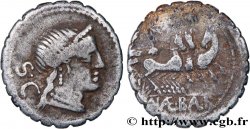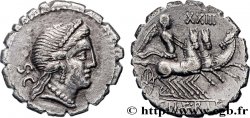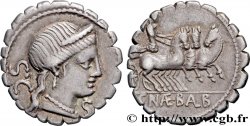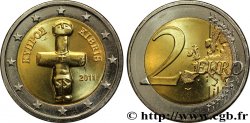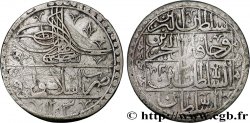v15_1483 - NAEVIA Denier serratus
MONNAIES 15 (2002)
Precio de inicio : 70.00 €
Valoración : 150.00 €
Precio realizado : 75.00 €
Número de ofertas : 2
Oferta más alta : 132.00 €
Precio de inicio : 70.00 €
Valoración : 150.00 €
Precio realizado : 75.00 €
Número de ofertas : 2
Oferta más alta : 132.00 €
Tipo : Denier serratus
Fecha: 79 AC.
Nombre del taller / ciudad: Rome ou Italie
Metal: plata
Milésimas de pureza : + 950 ‰
Diámetro: 19,5 mm
Eje de acuñación: 6 h.
Peso: 3,72 g.
Comentarios sobre el estado de conservación:
Beau portrait. Bien centré des deux côtés. Patine de collection. Faiblesse de frappe sur le trige
N° en los catálogos de referencia :
Anverso
Titulatura del anverso: S. C.
Descripción del anverso: Tête diadémée de Vénus à droite.
Traducción del anverso: “Senatus Consulto”, (avec l’accord du Sénat).
Reverso
Titulatura del reverso: CNÆ B(AL)B.
Descripción del reverso: Victoire dans un trige galopant à droite, tenant les rênes des deux mains à gauche ; au-dessus, marque de contrôle VII, (7).
Traducción del reverso: “Cnæus [Nævius] Balbus”, (Gneius [Nævius] Balbus).
Comentario
La représentation du trige est aussi rare dans les numismatiques gauloise que romaine. On trouve dans l'ouvrage de LA TOUR (LT. 10074, 10075 et 10085), les dessins de trois deniers copiés ou imités sur ce prototype par les Celtes du Danube. D'autre part, S. Scheers donne comme prototype du bronze véliocasse (LT. 7356), le denier de Jules César (RCV. 1402) avec Énée fuyant Troie. En réalité, la tête de Vénus de notre denier semble assez proche de celle du bronze et pourrait lui avoir servi de modèle.
The representation of the trige is as rare in Gallic as in Roman numismatics. In the work of LA TOUR (LT. 10074, 10075 and 10085), we find the drawings of three denarii copied or imitated on this prototype by the Celts of the Danube. On the other hand, S. Scheers gives as prototype of the bronze veliocasses (LT. 7356), the denarius of Julius Caesar (RCV. 1402) with Aeneas fleeing Troy. In reality, the head of Venus of our denarius seems quite close to that of the bronze and could have served as a model for it.
The representation of the trige is as rare in Gallic as in Roman numismatics. In the work of LA TOUR (LT. 10074, 10075 and 10085), we find the drawings of three denarii copied or imitated on this prototype by the Celts of the Danube. On the other hand, S. Scheers gives as prototype of the bronze veliocasses (LT. 7356), the denarius of Julius Caesar (RCV. 1402) with Aeneas fleeing Troy. In reality, the head of Venus of our denarius seems quite close to that of the bronze and could have served as a model for it.







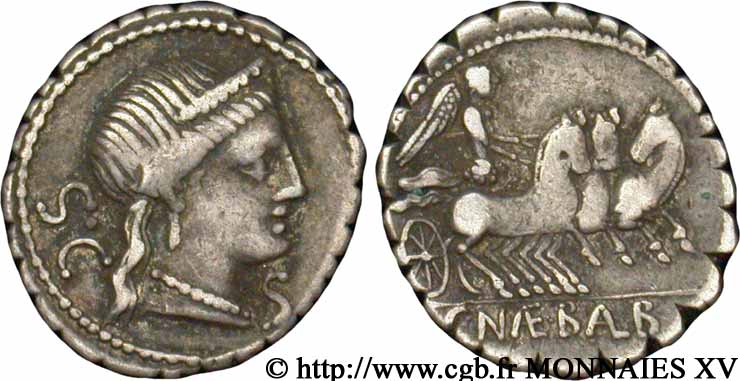
 Informar de un error
Informar de un error Imprimir la página
Imprimir la página Comparte mi selección
Comparte mi selección Haz una pregunta
Haz una pregunta Consignar / vender
Consignar / vender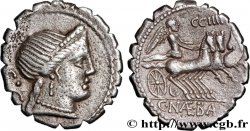
 Descriptivo
Descriptivo